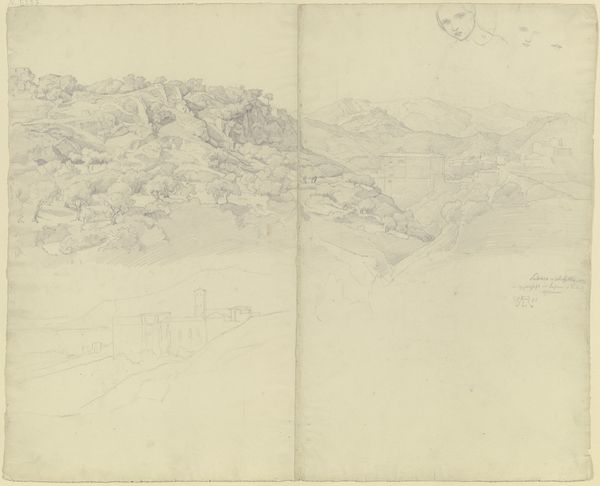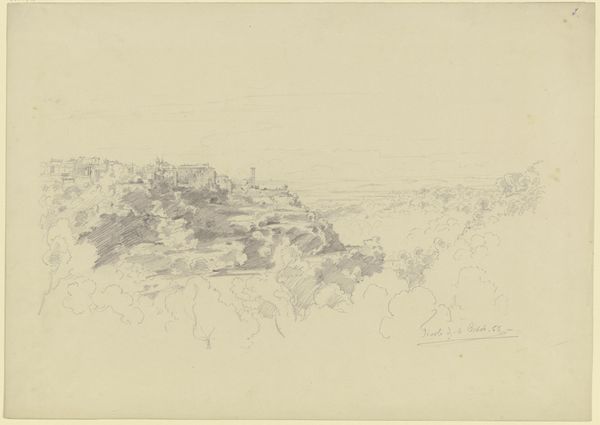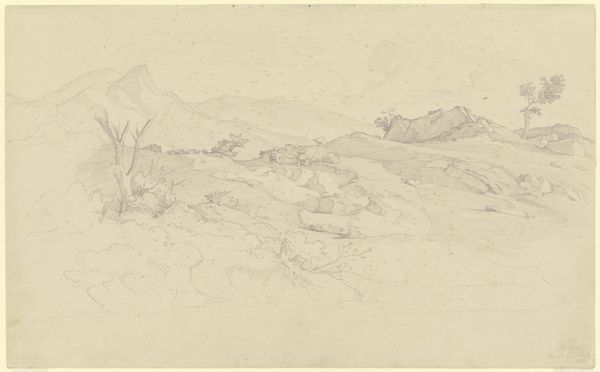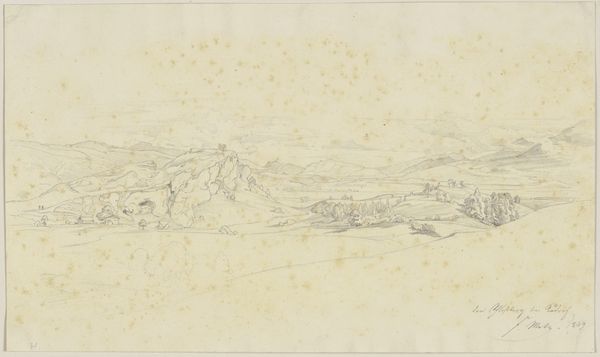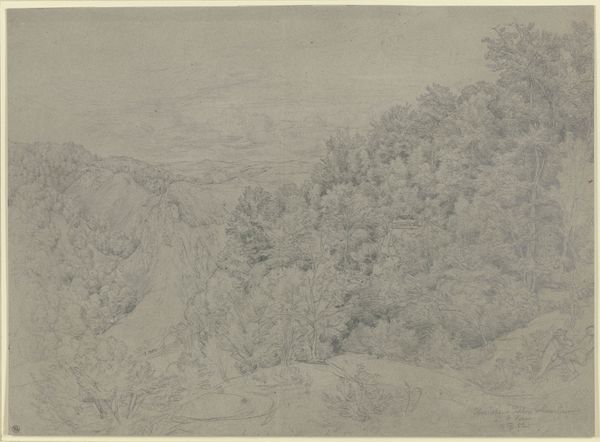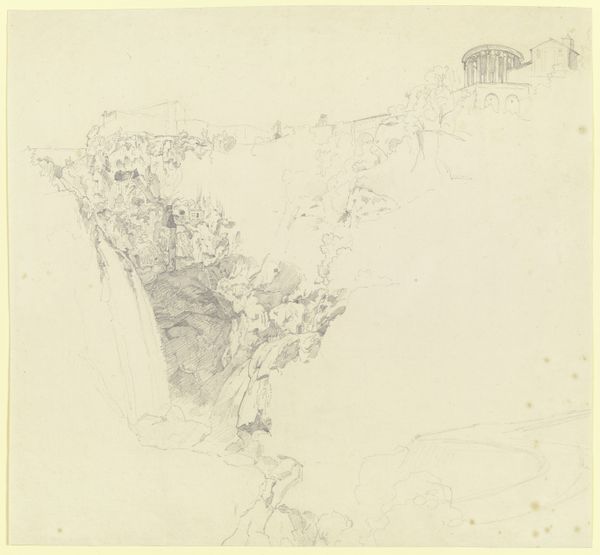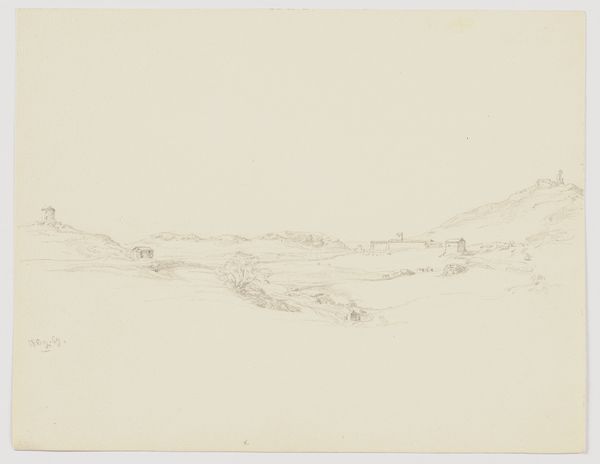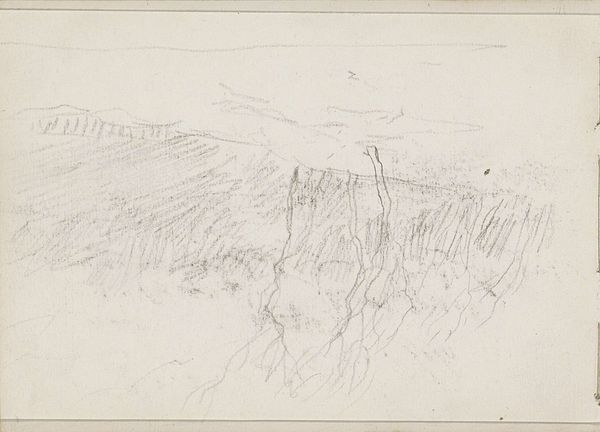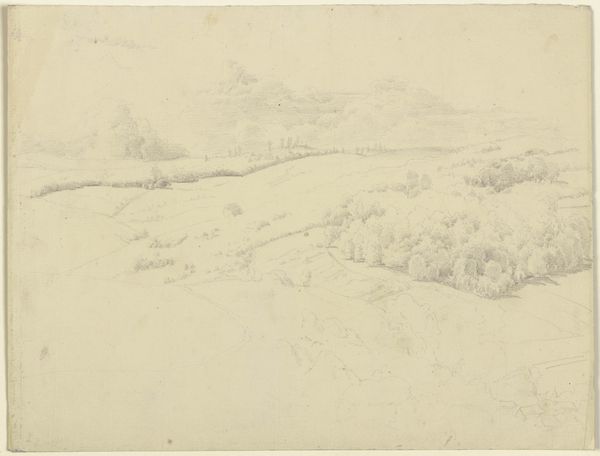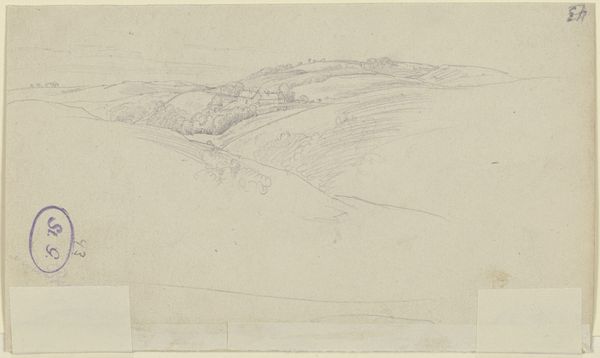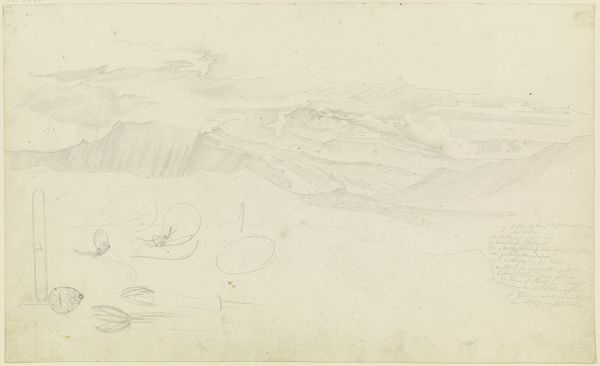
Copyright: Public Domain
Editor: This pencil drawing, "The Waterfalls of Tivoli," was created in September of 1855 by Alexander Gwinner and it is currently at the Städel Museum. I’m struck by its delicate rendering; the scene almost dissolves into mist. What do you make of it? Curator: Well, the initial thing that jumps out at me is how Gwinner uses the humble pencil. The limitations become the strength, focusing on labor instead of just representation. Think of the graphite source, likely mined and processed, turned into an implement for crafting an image tied to Romantic ideals. Editor: That's fascinating! I hadn’t considered the pencil itself as an artifact of industry. Do you see any connection between the materials and the landscape depicted? Curator: Absolutely. Tivoli was a site romanticized, and the pencil, in this case, offers both access and constraint. While industrial pencil production enables widespread image-making, the subtle, muted tones might underscore the futility of capturing the sublimity of nature itself. How do you interpret that? Editor: So it's almost a comment on the tension between man's attempt to document the awe-inspiring versus nature's resistance to that? Curator: Precisely. This isn’t just a picturesque view, it is the labor, consumption, and technology behind such depictions we are seeing, really. It makes one consider: for whom, and for what end, was the sketch created? Editor: I see now; it opens up a whole new level of thinking about this piece. I will definitely have to dig deeper into that, and thank you so much for helping me understand this from this different point of view. Curator: Indeed, considering the means of production is always crucial. It encourages critical engagement beyond aesthetics.
Comments
No comments
Be the first to comment and join the conversation on the ultimate creative platform.
